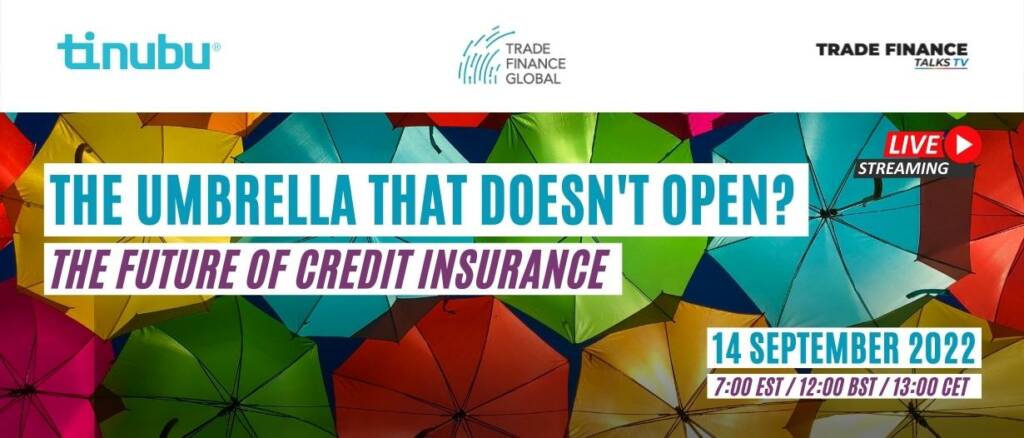The media often shirks trade credit insurance as an umbrella that doesn’t open when it rains–– protecting clients only until a moment before the client actually needs protection.
Many practitioners in the space, however, disagree with this notion.
To understand how firms and instructions operate in the trade credit insurance industry and the role that technology may play in altering this landscape, TFG’s Deepesh Patel sat down with; Gary Lowe, global head of the Global Credit Insurance Group at Standard Chartered, Jérôme Pezé, CEO at Tinubu, Janusz Władyczak, CEO at KUKE, the Polish export credit agency (ECA), and Richard Wulff, executive director at ICISA.
Banks and trade credit insurance
Banks use trade credit insurance for five primary reasons:
- To increase lending capacity
- Provide regulatory capital
- Concentration risk management in specific industries or names
- Increase return on capital
- Country limit relief
This raises the question about the notion that trade credit insurance is an umbrella that does not open.
According to Richard Wulff, this is not accurate.
“The best proof that the [CPRI] product works is that the loss ratio hovers around 50% with $346 billion in transactions facilitated for banks,” Wulff said.
“Of all the claims that we’ve received in the time period between 2007 and 2020, 96.8% of all claims were paid.”
There is still risk appetite, it just comes at a cost
Before diving headlong into risk appetites, there are two important points to consider.
First, despite often being viewed this way, risk appetite is not binary, meaning that it can grow and shrink and exist to different degrees in the market.
Second, the “market” is an aggregate measure of many different players who have different strategies for approaching risk. Just because the risk appetite of the market at large is increasing or decreasing, it does not necessarily mean that any individual firm is following that trend.
Many experts would agree that underwriters are becoming more selective in recent months and moving up the credit curve.
“There continues to be sufficient capacity in the market,” Wulff said.
“Although that capacity comes at a price, and that price is increasing at the moment.”
It is increasing in line with the increase in capital costs and with events in the reinsurance market.
There is sufficient reinsurance capacity expected for 2023, but again, it will come at a price.
“What you’ll see is that there will be competition between lines of business,” Wulff added.
“The credit business will have to compete with property, casualty, marine, and other business lines.”
This increased competition will drive the prices up, but will not outright eliminate risk appetite.

Customers will demand more and technology can help
As technology use becomes more widespread in trade and business settings, customers in the trade credit market are going to demand more from their insurers.
“It’s clear that the customer will expect the credit insurer to be more intelligent,” Pezé said.
“In the coming years, credit insurers are going to face a huge test of their business models.”
Customers will expect a credit insurer to better understand their business, including its specifications, credit sectors, market, and buyers.
They will also expect better integrations to credit insurers, seamless connection to banks, and stronger levels of support.
There will also be a growing demand for transparency in terms of risk, pricing, and other pertinent information for the policyholder.
Credit insurers that are unable to meet these demands will be left behind in the market.
Technology and digital tools can play a major role in helping credit insurers deliver these imminent requirements and meet the challenges that lie ahead.
According to Jérôme Pezé, these promises fall into six different dimensions:
- Portfolio analysis (this includes the understanding of exposure, risk consolidation, good governance, and adequate reporting)
- Business intelligence (the large inflow of support capital has made reading financial statements with traditional methods unreliable. Digital tools can help address these added complexities)
- Cost efficiency (in order to remain competitive)
- Reactivity
- Agility
- Product innovation
As Gary Lowe added, “There are still plenty of opportunities to diversify and support the real-world economy, particularly as technology moves on.”
Resilience in the credit insurance industry
Despite all the shocks and changes, it is difficult to dispute the resilience of the credit insurance industry.
“If you look back at the past economic downturns and the shocks that the economy has sustained, one thing was constant, and that was the will and the ability of the industry to support risk and to support its clients,” Wulff said.
“I expect that firmly to continue into the future.
“All the economic shocks and all the downtrends were slightly different and this one is different again.
“What will not change is the industry’s resilience and capacity.”

























